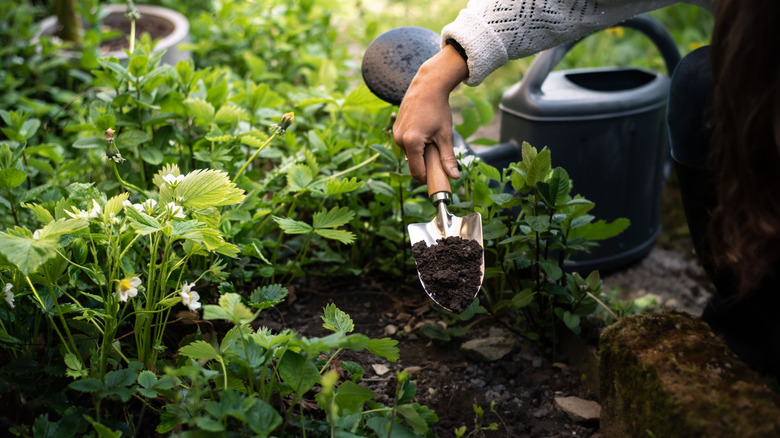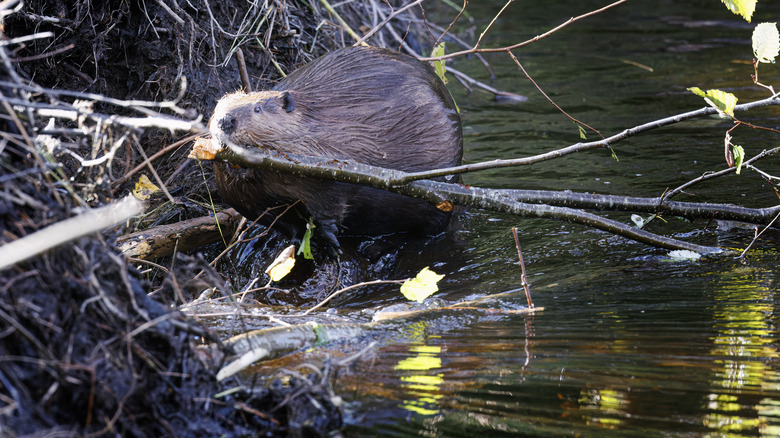The So-Called 'Pest' That Can Actually Do You A Favor In The Garden
When you think of the garden pests you don't want in your yard, you might first refer to common rodents and insects. Depending on where you live, beavers are often regarded as pests, too. These semi-aquatic animals are known for their natural engineering skills, which help them to build homes and nesting grounds quickly. Unfortunately, though, the work of beavers can also cause some real problems if you live near creeks and other sources of water. Having beavers nearby isn't always a guaranteed headache, though. In fact, some property owners have identified beavers as being beneficial to their land because of the way their dam-building can preserve nearby water and help plants grow.
While beavers can be considered nuisances from time to time, they're actually extremely important to the natural ecosystem. When beavers build dams, they create natural wetlands. These entities are important for numerous types of species, including both plants and animals. Plants need water and nutrients to thrive, while certain animals, such as amphibians and fish, also need more water to survive. The development of wetlands is even more important because these systems are being lost to human activities such as agriculture and urban development. On top of all of this, beaver activities are also thought to help mitigate the negative effects of climate change, including carbon sequestration. When beaver populations decline, there are fewer wetlands, less diversity of species, and more greenhouse gases. Additionally, beaver activities also help to preserve sources of drinking water for humans because of the way their dams filter freshwater and remove pollutants.
How to balance the benefits of beavers with the potential damage they may cause
While beavers can help ecosystems at large, you might be wondering how exactly these animals could directly benefit your home garden. These natural engineers actually help balance out the water in your region by increasing the water table and helping to reduce excess flow during the wet season. Not only do these effects reduce the incidence of flooding during your region's wet season, but they also help to preserve water during the dry season. Also, the benefits of a healthier and diverse ecosystem will likely trickle down to more biodiversity in your home garden, too.
On the flipside, beaver dams can also cause minor flooding. Such risks are greatest if you live near a river, stream, or creek where beaver activities are particularly high. Beavers can also eat vegetation, as well as the bark of trees, which helps keep their teeth filed down. In these cases, there are things you can do to help balance living alongside beavers without removing them. For starters, you can protect your trees by wrapping the bases of their trunks with sturdy metal wire. Make sure the fencing is securely anchored to the ground and covers the tree trunk 3 to 4 feet high. You might also consider offering beavers sources of food to protect more vulnerable items in your garden. Examples include stakes from cottonwood, dogwood, and willow trees. Consider reaching out to your local wildlife resources office if beaver activities are causing overflow in your yard or garden.

